Giants of the Rainforest: A Deep Dive into the World of the Hercules Beetle
Few insects command as much awe and fascination as the Hercules beetle (Dynastes hercules). Named after the mythological strongman, this colossal beetle is not merely a large insect; it is a testament to the power and biodiversity of the rainforest. This guide explores all aspects of the Hercules beetle, from its natural habitat and life cycle to its cultural significance and interactions with both the environment and humans.
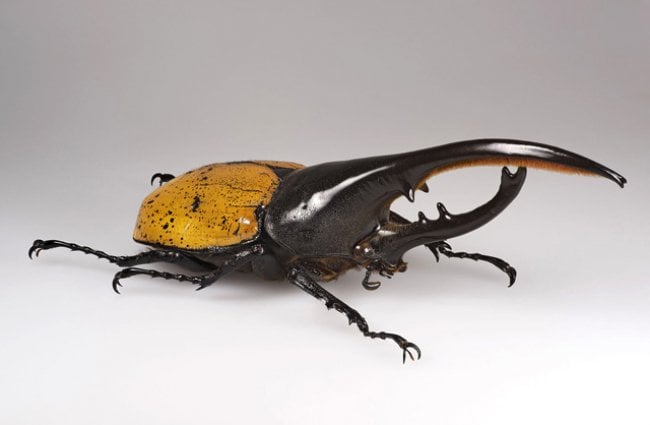
Understanding the Hercules Beetle
Physical Characteristics: A Beetle of Immense Proportions
The Hercules beetle is renowned for its size. Males, significantly larger than females, can reach lengths of up to 6.5 inches (17 centimeters), making them some of the largest beetles on Earth. This impressive size is amplified by the long, curved horn, or cephalic horn, extending from the pronotum. The horn is not used for aggressive combat like some other horned beetles; it is primarily used for competing with other males for mating rights and dislodging rivals from prime feeding spots. The beetle’s exoskeleton is typically a deep, glossy black or brown, offering robust protection. Females, while smaller, possess a sturdier build and lack the prominent horn.
Habitat and Distribution: Where Do These Giants Roam?
Hercules beetles are native to the rainforests of Central and South America, ranging from Mexico down to Ecuador, Peru, Bolivia, and Brazil. They thrive in humid, tropical environments with abundant decaying wood, which is essential for their larval development. These beetles are most commonly found in the understory of old‑growth forests, where conditions remain consistently moist and sheltered. The presence of suitable host trees, like those from the Cecropia genus, is also a crucial factor in determining their distribution. While largely confined to the rainforests, sporadic sightings have been reported in disturbed areas and plantations that offer sufficient resources.

Life Cycle: From Egg to Imposing Adult
Larval Stage: The Wood‑Devouring Years
The Hercules beetle spends the majority of its life as a larva, commonly called a grub. This stage lasts for several years—typically between two and four—during which the larva feeds almost continuously on decaying wood. Larvae are creamy white, cylindrical, and possess powerful mandibles perfectly suited for breaking down wood fibers. They create elaborate tunnels within the wood, forming a network of galleries. As the larva grows, it molts several times. The quality and quantity of wood available are paramount to the larva’s development; a nutrient‑rich environment results in a larger, healthier adult beetle.
Pupation and Emergence: A Transformation Underway
Once the larva reaches its full size, it pupates within a self created chamber inside the wood. During pupation, the larval tissues are reorganized into the adult form. This process can take several weeks or even months. The adult beetle then emerges from the pupal case, a fully formed, winged insect. Newly emerged adults often appear pale and soft, but their exoskeleton hardens and darkens over the following days. The adult stage is relatively short lived, lasting only a few months, and is primarily focused on reproduction.
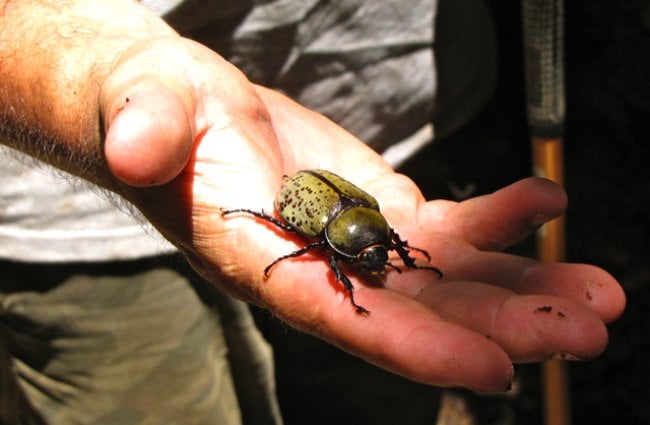
Diet and Ecological Role
Larval Diet: The Importance of Decaying Wood
As previously mentioned, Hercules beetle larvae are strictly xylophagous, meaning they feed exclusively on wood. They play a vital role in the rainforest ecosystem by breaking down dead and decaying wood, contributing to nutrient cycling and the creation of soil. Their tunneling activities also aerate the wood, further accelerating the decomposition process.
Adult Diet: Fruit and Sap as Fuel
Adult Hercules beetles are primarily frugivorous, feeding on ripe fruits, especially those that are overripe or fermenting. They are also attracted to tree sap, which provides essential sugars and nutrients. Adults often congregate around fruiting trees, creating a noticeable presence in the forest canopy. While they do not play a major role in pollination, they can aid seed dispersal by consuming fruit and carrying seeds to new locations.
Behavior and Reproduction
Mating Rituals: A Test of Strength
Male Hercules beetles engage in fierce competition for mating rights. They use their horns not to directly attack each other, but to wrestle and attempt to dislodge opponents from desirable mating perches—typically fruiting trees or elevated branches. The beetle that maintains its position usually attracts the female. These battles can last for hours and involve a significant expenditure of energy.
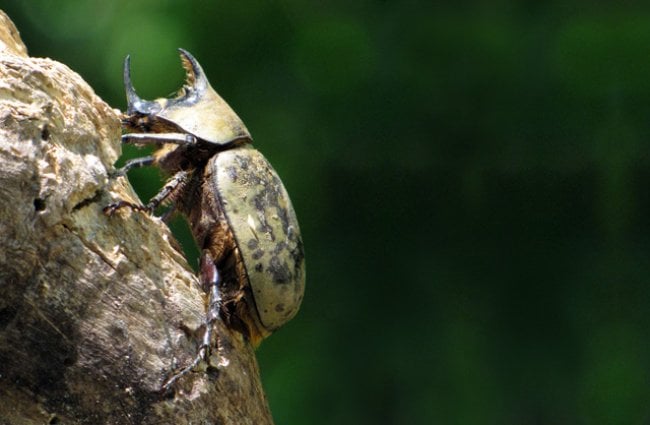
Egg Laying and Parental Care: A Brief Maternal Role
After mating, the female beetle lays her eggs in decaying wood, typically in moist, sheltered locations. She may lay several hundred eggs during her lifetime. The female provides no further parental care; the larvae are entirely dependent on the resources available in the decaying wood.
Hercules Beetles and Humans
Cultural Significance: A Symbol of Strength
Hercules beetles hold cultural significance for many indigenous communities in Central and South America. They are often viewed as symbols of strength, power, and resilience. Their image appears in traditional art, folklore, and ceremonial practices.
Conservation Status and Threats
Currently, the Hercules beetle is not considered endangered or threatened. However, habitat loss due to deforestation and agricultural expansion poses a significant threat to their populations. Unsustainable logging practices, in particular, remove the decaying wood that is essential for larval development. The illegal collection of beetles for the pet trade also contributes to population declines in some areas.

Encountering a Hercules Beetle: What to Do
If you encounter a Hercules beetle in the wild, observe it from a distance. These insects are generally harmless to humans, but they can pinch if handled roughly. Avoid disturbing their habitat or attempting to capture them. If you find a larva, leave it undisturbed within its decaying wood.
Advanced Insights for Enthusiasts
Subspecies Variation
Several subspecies of Dynastes hercules are recognized, differing in size, horn shape, and coloration. These variations reflect regional adaptations and genetic diversity. Dedicated entomologists continue to study these subspecies to better understand the species’ evolutionary history.
Captive Care: Considerations for Breeders
Keeping Hercules beetles in captivity requires careful attention to their specific needs. A suitable enclosure should be spacious, well ventilated, and maintained at a high humidity level. The substrate should consist of a mix of decaying wood and leaf litter. Larvae require a constant supply of fresh wood, while adults should be provided with ripe fruit and a source of water. Maintaining optimal temperature and humidity levels is crucial for successful breeding.
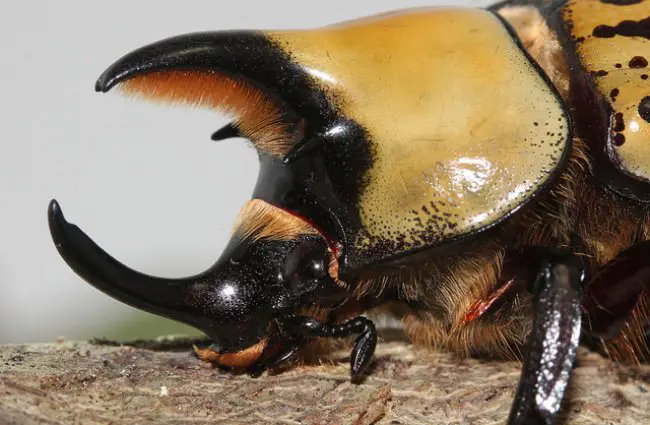
Conclusion
The Hercules beetle stands as a magnificent example of nature’s power and artistry. From its colossal size and impressive horn to its crucial role in the rainforest ecosystem, this insect commands respect and admiration. By understanding the Hercules beetle’s life cycle, behavior, and ecological needs, we can contribute to its conservation and ensure that future generations continue to marvel at this giant of the rainforest.

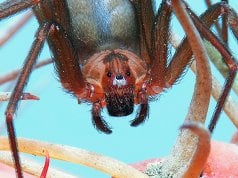
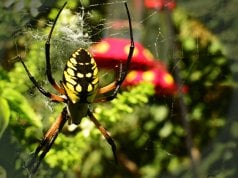
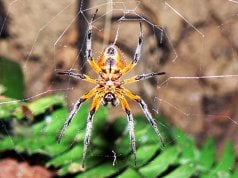
![Red Angus Closeup of a beautiful Red Angus cowPhoto by: U.S. Department of Agriculture [pubic domain]https://creativecommons.org/licenses/by/2.0/](https://animals.net/wp-content/uploads/2020/03/Red-Angus-4-100x75.jpg)

